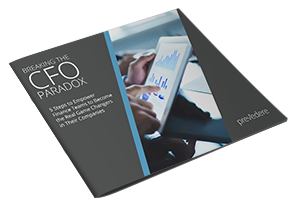Last Updated: June 22, 2018
“Walgreen Shakeup Followed Bad Projection” reads the Wall Street Journal headline. “CFO, Pharmacy Chief Leave After Bungled Forecast,” it continues directing our attention to the impact of forecast accuracy.
Then there is McDonald’s CEO Don Thompson, who was ousted after missing projections for four consecutive quarters in 2014.
Business students from the University of Chicago, Hong Kong University and the University of Oregon turned a scientific eye to such anecdotes, scrutinizing CEO turnover and earnings forecasts over an eight-year period. Their research showed that the probability of CEO turnover is highly correlated to forecast inaccuracy error rate, with larger errors increasing the risk of turnover.
What’s most surprising from this study though, is that the correlation holds true even for positive forecast errors when companies outperformed expectations. The researchers explained this by noting that corporate boards view forecast accuracy “as a signal of CEOs’ managerial ability” – that is, inaccurate projections in any direction indicate an inability to understand all of the factors affecting a company’s performance and manage them accordingly.
Forecast accuracy affects job security at all levels, not just the C-suite.
Consider the supply chain manager who orders materials based on current forecasts. Inaccuracies can quickly result in shortages or oversupply – costing companies millions and putting the manager’s job in jeopardy. Then there’s the sales team that is working toward quotas set too high for current market conditions; again, jobs are at risk when the team fails to meet these unattainable demands. And what about the marketing team who has to halt the introduction of a new product based on conservative forecasts? They’ll potentially miss an opportunity to gain competitive advantage through early market entry. All of these disparate teams are heavily impacted by business performance projections.
Though forecasting certainly affects shareholder confidence, it’s clearly not just a Wall Street measure. Employees at all levels rely on accurate forecasts to do their jobs well. That’s why it’s critical that executives create forecasts that take both internal and external factors affecting their business’ performance into account when creating projections.
All companies are impacted by today’s fast-changing global economy and need to look beyond their own four walls for their specific demand drivers. With so much riding on forecast accuracy, why are so many companies still ignoring this critical component and accepting forecast inaccuracy as their foundation?
Everything from local weather to the global economy affects supply and demand. In today’s volatile business environment, it’s vital that companies take every factor, not just their own historical date, into consideration to remain competitive.
